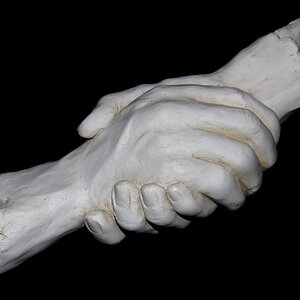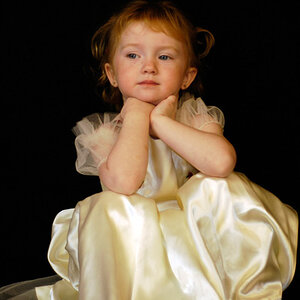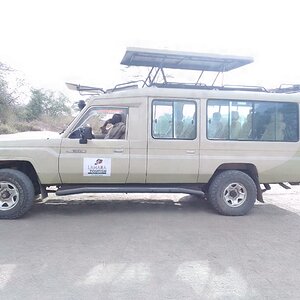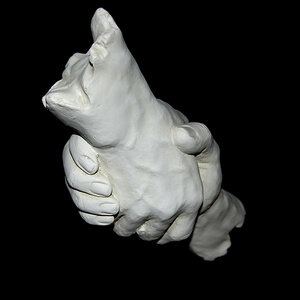Navigation
Install the app
How to install the app on iOS
Follow along with the video below to see how to install our site as a web app on your home screen.

Note: This feature currently requires accessing the site using the built-in Safari browser.
More options
You are using an out of date browser. It may not display this or other websites correctly.
You should upgrade or use an alternative browser.
You should upgrade or use an alternative browser.
85mm f/3.5 or 105mm f/2.8
- Thread starter bonosa1
- Start date
kundalini
Been spending a lot of time on here!
- Joined
- Jul 18, 2007
- Messages
- 13,607
- Reaction score
- 1,937
- Location
- State of Confusion
- Can others edit my Photos
- Photos NOT OK to edit
FOR ME, the 105 gets the nod... by a long shot. It is pretty much known as the gold standard for macro lenses, max aperature is f/2.8, longer working distance for nervous bugs, and it's a FX lens. Plus it's already in my bag. 
The 85mm is only recently introduced (not that it's a bad mark) but the max f/3.5 is too slow for me. Also, I'm not interested in DX lenses.

The 85mm is only recently introduced (not that it's a bad mark) but the max f/3.5 is too slow for me. Also, I'm not interested in DX lenses.
eccs19
TPF Noob!
- Joined
- Jun 30, 2008
- Messages
- 571
- Reaction score
- 6
- Location
- Lisle Ontario Canada
- Can others edit my Photos
- Photos OK to edit
Myself I'd get the 85mm, as I've already got a 100mm, but if I didn't have either, I'd probably get the 100mm, as it's a faster lens. Can you do portraits with 100mm? I think you can do portraits with just about any lens, as long as you've got the room to be away from the subject.
One other factor may be, what brand of lenses are they? It's possible that they could be a crappy lens, and that may make one better than the other as well.
One other factor may be, what brand of lenses are they? It's possible that they could be a crappy lens, and that may make one better than the other as well.
Derrel
Mr. Rain Cloud
- Joined
- Jul 23, 2009
- Messages
- 48,225
- Reaction score
- 18,941
- Location
- USA
- Website
- www.pbase.com
- Can others edit my Photos
- Photos OK to edit
The new 85mm f/3.5 has VR-II, internal focus, and is a DX lens. According to two well-respected lens experts, the MTF graphs show that the new 85mm is, theoretically, the best Nikon general photography lens ever made in terms of optical performance. Literally, the best general photographic lens Nikon has ever designed (excluding the Repro-Nikkor lenses and the stepper lenses,etc). Of course, the theoretical MTF graphs do not take into account loss of contrast and flare in the real world--but still--this new lens is designed to have incredibly high optical performance. As in really,really,really good. And that makes sense, since that is what high-megapixel, high-density 1.5x DX sensor bodies demand--an extremely high-performance optical design for ultra-densely packed, small-pixel sensors.
Just like the 14-24mm AF-S Nikkor is the best wide angle zoom ever made--better than almost any prime lens in its focal length from any manufacturer, my suspicion is that the new 85/3.5 was designed for the FUTURE cameras and sensors Nikon has planned, just like the 14-24 was. Expecting that the next generation of Nikon DX bodies will be at 16 to 18 megapixels, up from 12.2, I expect Nikon designed the new lens with f/3.5 as max aperture and as 85mm to maximize total,overall performance of the lens, while still coming in just over $500 in price.
Nikon has made older repro-Nikkor lenses capable of resolving 600 lp/mm with visible light, and specialty lenses capable of resolving over 1000 lp/mm within the green light spectrum; if pixels drop to the Canon 7D size, of under 5 microns, in future Nikon DX bodies, the 85mm DX Nikkor might be the lens to have for critical macro work. Nobody knows, yet, just how good the lens is on an actual sensor, but I think I understand why Nikon designed this lens as a DX,and an f/3.5, and not overly long--above 100 and to 120 and 150 and 180mm, it becomes necessary to have a true apochromatic design, which costs more money--the shorter focal length of 85mm will minimize the chance of chromatic aberration that would need to be corrected.
Just like the 14-24mm AF-S Nikkor is the best wide angle zoom ever made--better than almost any prime lens in its focal length from any manufacturer, my suspicion is that the new 85/3.5 was designed for the FUTURE cameras and sensors Nikon has planned, just like the 14-24 was. Expecting that the next generation of Nikon DX bodies will be at 16 to 18 megapixels, up from 12.2, I expect Nikon designed the new lens with f/3.5 as max aperture and as 85mm to maximize total,overall performance of the lens, while still coming in just over $500 in price.
Nikon has made older repro-Nikkor lenses capable of resolving 600 lp/mm with visible light, and specialty lenses capable of resolving over 1000 lp/mm within the green light spectrum; if pixels drop to the Canon 7D size, of under 5 microns, in future Nikon DX bodies, the 85mm DX Nikkor might be the lens to have for critical macro work. Nobody knows, yet, just how good the lens is on an actual sensor, but I think I understand why Nikon designed this lens as a DX,and an f/3.5, and not overly long--above 100 and to 120 and 150 and 180mm, it becomes necessary to have a true apochromatic design, which costs more money--the shorter focal length of 85mm will minimize the chance of chromatic aberration that would need to be corrected.
Wolverinepwnes
TPF Noob!
- Joined
- Oct 28, 2009
- Messages
- 289
- Reaction score
- 0
- Can others edit my Photos
- Photos OK to edit
Nikon 105mm f/2.8 ALLLLL THE WAY!!!!! i'm saving up to get one too! nothing compares
DScience
No longer a newbie, moving up!
- Joined
- Apr 12, 2009
- Messages
- 1,513
- Reaction score
- 122
- Location
- Denver, CO
- Can others edit my Photos
- Photos NOT OK to edit
The new 85mm f/3.5 has VR-II, internal focus, and is a DX lens. According to two well-respected lens experts, the MTF graphs show that the new 85mm is, theoretically, the best Nikon general photography lens ever made in terms of optical performance. Literally, the best general photographic lens Nikon has ever designed (excluding the Repro-Nikkor lenses and the stepper lenses,etc). Of course, the theoretical MTF graphs do not take into account loss of contrast and flare in the real world--but still--this new lens is designed to have incredibly high optical performance. As in really,really,really good. And that makes sense, since that is what high-megapixel, high-density 1.5x DX sensor bodies demand--an extremely high-performance optical design for ultra-densely packed, small-pixel sensors.
Just like the 14-24mm AF-S Nikkor is the best wide angle zoom ever made--better than almost any prime lens in its focal length from any manufacturer, my suspicion is that the new 85/3.5 was designed for the FUTURE cameras and sensors Nikon has planned, just like the 14-24 was. Expecting that the next generation of Nikon DX bodies will be at 16 to 18 megapixels, up from 12.2, I expect Nikon designed the new lens with f/3.5 as max aperture and as 85mm to maximize total,overall performance of the lens, while still coming in just over $500 in price.
Nikon has made older repro-Nikkor lenses capable of resolving 600 lp/mm with visible light, and specialty lenses capable of resolving over 1000 lp/mm within the green light spectrum; if pixels drop to the Canon 7D size, of under 5 microns, in future Nikon DX bodies, the 85mm DX Nikkor might be the lens to have for critical macro work. Nobody knows, yet, just how good the lens is on an actual sensor, but I think I understand why Nikon designed this lens as a DX,and an f/3.5, and not overly long--above 100 and to 120 and 150 and 180mm, it becomes necessary to have a true apochromatic design, which costs more money--the shorter focal length of 85mm will minimize the chance of chromatic aberration that would need to be corrected.
:thumbup:
Wow Derrel, you never cease to impress.
I'm curious about what you write. Can you go into a little detail as to why the f3.5 could be advantageous? Or is it simply to keep the price down?
Derrel
Mr. Rain Cloud
- Joined
- Jul 23, 2009
- Messages
- 48,225
- Reaction score
- 18,941
- Location
- USA
- Website
- www.pbase.com
- Can others edit my Photos
- Photos OK to edit
A slower maximum aperture makes the lens physically smaller and lighter,and easier to design, and that keeps the weight, and the price both more in line with what people want from a DX lens. By keeping the max. aperture at f/3.5, it's easier to optimize the lens from wide-open, which is a very reasonable f/3.5, down to the common macro apertures of f/8, f/11, etc.
With higher-MP sensors, it is important that a lens designed and optimized for a densely-packed sensor be *very good* to even *excellent* at wider apertures like f/4 to f/4.8, f/5, in those ranges slightly wider than f/5.6. For example, on the D2x, which is a 12.8 MP sensor with 12.2 effective MP, the pixels are small and densely-packed: with a 12.2 MP sensor, diffraction begins to affect overall image sharpness at f/5.6, and so for future sensors that might be 18-20-24 megapixel's on DX, it is almost essential that the lens performs *brilliantly* at f/4 to f/4.5--otherwise, why even use a high-MP count sensor camera?
A good example is the Nikkor 45-P f/2.8 lens; it is an f/2.8 lens, but even wide-open, at f/2.8, its optical performance is the best of any of the Nikon 50-mm normal lenses which are f/1.4 or f/1.8. The absolute, sharpest 50mm lens EVER tested by Popular Photography was the 50mm f/3.5 Heliar made by Cosina in Japan. A slowish-design, like f/3.5, is easier to optimize and make really good than a high-speed lens, especially with a target price of $529.
Since a macro lens is often used stopped down to f/8, there's not that much advantage to making the lens f/2.8--that would make the lens larger, heavier, and wide aperture just isn't that needed for a macro lens. Besides, with most macro lenses like the Tamron 90mm f/2.8, the maximum aperture drops to f/3.5 anyway, when focusing close, and drops down to f/5.6 at 1:1, or a two-stop loss of aperture speed. Not sure how this lens will be designed, if it will have a constant aperture and lose a little focal length as it is focused closer (losing focal length as a lens focuses closer is normal) is my hope. The lens is due any day now.
With higher-MP sensors, it is important that a lens designed and optimized for a densely-packed sensor be *very good* to even *excellent* at wider apertures like f/4 to f/4.8, f/5, in those ranges slightly wider than f/5.6. For example, on the D2x, which is a 12.8 MP sensor with 12.2 effective MP, the pixels are small and densely-packed: with a 12.2 MP sensor, diffraction begins to affect overall image sharpness at f/5.6, and so for future sensors that might be 18-20-24 megapixel's on DX, it is almost essential that the lens performs *brilliantly* at f/4 to f/4.5--otherwise, why even use a high-MP count sensor camera?
A good example is the Nikkor 45-P f/2.8 lens; it is an f/2.8 lens, but even wide-open, at f/2.8, its optical performance is the best of any of the Nikon 50-mm normal lenses which are f/1.4 or f/1.8. The absolute, sharpest 50mm lens EVER tested by Popular Photography was the 50mm f/3.5 Heliar made by Cosina in Japan. A slowish-design, like f/3.5, is easier to optimize and make really good than a high-speed lens, especially with a target price of $529.
Since a macro lens is often used stopped down to f/8, there's not that much advantage to making the lens f/2.8--that would make the lens larger, heavier, and wide aperture just isn't that needed for a macro lens. Besides, with most macro lenses like the Tamron 90mm f/2.8, the maximum aperture drops to f/3.5 anyway, when focusing close, and drops down to f/5.6 at 1:1, or a two-stop loss of aperture speed. Not sure how this lens will be designed, if it will have a constant aperture and lose a little focal length as it is focused closer (losing focal length as a lens focuses closer is normal) is my hope. The lens is due any day now.
DScience
No longer a newbie, moving up!
- Joined
- Apr 12, 2009
- Messages
- 1,513
- Reaction score
- 122
- Location
- Denver, CO
- Can others edit my Photos
- Photos NOT OK to edit
A slower maximum aperture makes the lens physically smaller and lighter,and easier to design, and that keeps the weight, and the price both more in line with what people want from a DX lens. By keeping the max. aperture at f/3.5, it's easier to optimize the lens from wide-open, which is a very reasonable f/3.5, down to the common macro apertures of f/8, f/11, etc.
With higher-MP sensors, it is important that a lens designed and optimized for a densely-packed sensor be *very good* to even *excellent* at wider apertures like f/4 to f/4.8, f/5, in those ranges slightly wider than f/5.6. For example, on the D2x, which is a 12.8 MP sensor with 12.2 effective MP, the pixels are small and densely-packed: with a 12.2 MP sensor, diffraction begins to affect overall image sharpness at f/5.6, and so for future sensors that might be 18-20-24 megapixel's on DX, it is almost essential that the lens performs *brilliantly* at f/4 to f/4.5--otherwise, why even use a high-MP count sensor camera?
A good example is the Nikkor 45-P f/2.8 lens; it is an f/2.8 lens, but even wide-open, at f/2.8, its optical performance is the best of any of the Nikon 50-mm normal lenses which are f/1.4 or f/1.8. The absolute, sharpest 50mm lens EVER tested by Popular Photography was the 50mm f/3.5 Heliar made by Cosina in Japan. A slowish-design, like f/3.5, is easier to optimize and make really good than a high-speed lens, especially with a target price of $529.
Since a macro lens is often used stopped down to f/8, there's not that much advantage to making the lens f/2.8--that would make the lens larger, heavier, and wide aperture just isn't that needed for a macro lens. Besides, with most macro lenses like the Tamron 90mm f/2.8, the maximum aperture drops to f/3.5 anyway, when focusing close, and drops down to f/5.6 at 1:1, or a two-stop loss of aperture speed. Not sure how this lens will be designed, if it will have a constant aperture and lose a little focal length as it is focused closer (losing focal length as a lens focuses closer is normal) is my hope. The lens is due any day now.
:thumbup: Thanks a lot Derrel, that explains a lot!
RancerDS
TPF Noob!
- Joined
- Nov 5, 2009
- Messages
- 227
- Reaction score
- 0
- Location
- Wagoner, OK
- Can others edit my Photos
- Photos NOT OK to edit
A lot of your detailed explanation makes sense based on what little experience I have garnered from a film SLR standpoint. Especially about your comment regarding Nikon putting forward thinking into their camera equipment designs. Yet maybe you are making the assumption the photographer original posting this question is using a dSLR?
Because while you are making great sense in regarding the processing of image data, it strikes me as counter-intuitive regarding the use of 35mm equipment. Isn't a faster prime lens almost always going to give better results at all f-stops? While it may remain questionable if a certain lens with a lighter/cheaper design is just as good or better than the primes, will it perform on those levels on the film SLR?
And certainly would welcome knowing which lenses would "outperform" the pro-series lenses that are with the consumer-market price tags.
Because while you are making great sense in regarding the processing of image data, it strikes me as counter-intuitive regarding the use of 35mm equipment. Isn't a faster prime lens almost always going to give better results at all f-stops? While it may remain questionable if a certain lens with a lighter/cheaper design is just as good or better than the primes, will it perform on those levels on the film SLR?
And certainly would welcome knowing which lenses would "outperform" the pro-series lenses that are with the consumer-market price tags.
tommac
TPF Noob!
- Joined
- Nov 30, 2009
- Messages
- 65
- Reaction score
- 0
- Location
- Queenstown, NZ
- Can others edit my Photos
- Photos NOT OK to edit
105 for sure!!
Similar threads
- Replies
- 3
- Views
- 618












